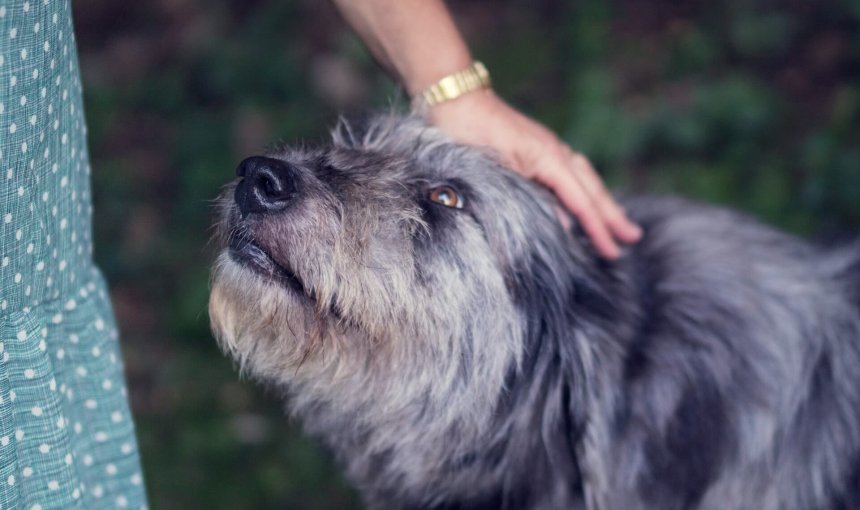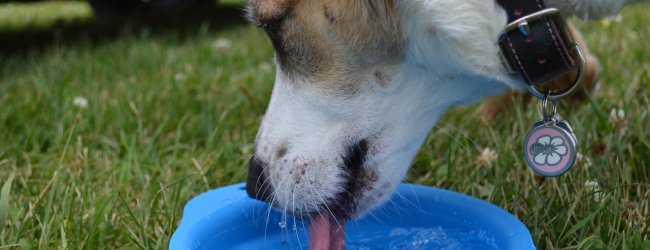10 Signs Of Dementia In Dogs & How To Spot Them Early

Is your furry friend acting differently lately? Perhaps they’re wandering aimlessly, forgetting routines, or seeming confused in familiar places. These could be signs of canine dementia, a condition many aging dogs face. While it can be heartbreaking to watch, knowing the signs early means you can get help and make their life as comfortable as possible.
In this guide, we’ll walk through the 10 most common signs of dementia in dogs – and how you can support your pup through their golden years.
Key takeaways
- Canine dementia (also called Canine Cognitive Dysfunction or CCD) affects memory, behavior, and awareness in senior dogs.
- Common symptoms include confusion, sleep changes, anxiety, and loss of house training1.
- Early detection and veterinary support can help manage symptoms and improve your dog’s quality of life.
- Tools like the Tractive GPS & Health Tracker can help you monitor changes in your dog’s behavior and keep them safe.

Find out how your dog spends their time.
Read more- 1. Disorientation or confusion
- 2. Changes in sleep patterns
- 3. House soiling or loss of house training
- 4. Decreased interest in play or walks
- 5. Anxiety or restlessness
- 6. Vocalizing more often
- 7. Acting differently with people or pets
- 8. Pacing or repetitive behavior
- 9. Trouble with familiar tasks or environments
- How Tractive helps you detect signs of illness early
- Conclusion
1. Disorientation or confusion
This is one of the hallmark signs of canine dementia.
- Your dog may get “stuck” in corners or behind furniture and not know how to back out.
- They might wander aimlessly or seem lost in their own home.
- You might notice them staring at walls or walking into rooms and forgetting why they’re there.
2. Changes in sleep patterns
Many senior dogs with dementia struggle with their sleep-wake cycle.
- Restlessness or pacing at night (sometimes paired with barking, howling or whining).
- Sleeping more during the day than they used to.
- Seeming disoriented when they wake up.
3. House soiling or loss of house training
A dog who was previously house trained may start having accidents inside.
- They may not signal when they need to go outside anymore.
- They might go potty in odd spots – like near their bed or food bowl.
- Some dogs forget routines like going to the door after meals.
4. Decreased interest in play or walks
Your once-energetic pup may no longer get excited about the things they loved.
- Ignoring toys or not understanding how to play with them.
- Less enthusiasm for walks or outings.
- Avoiding games or interactions that used to bring joy.

Get health alerts for your dog
Our pups can’t always tell us if something’s wrong. But if their tracker detects unusual changes in their routine, you’ll get an alert, helping you catch potential issues early.
5. Anxiety or restlessness
Dementia can make your dog feel confused and insecure, leading to anxiety.
- Panting, pacing, or whining with no clear reason.
- Clinginess or separation anxiety that wasn’t present before.
- Appearing scared in situations that were once normal.
6. Vocalizing more often
Increased barking, howling, or whining can be another sign of cognitive decline.
- Your dog may bark at nothing or vocalize during the night.
- They might be trying to communicate discomfort or confusion.
- Some vocalize when left alone or feel anxious without clear cause.
7. Acting differently with people or pets
Social behavior can shift in dogs experiencing cognitive dysfunction.
- Becoming more withdrawn or aloof.
- Failing to recognize familiar faces.
- Becoming unusually irritable or snappy, especially if startled.
8. Pacing or repetitive behavior
Repetitive motions can become more common as the condition progresses.
- Walking in circles or along the same path over and over.
- Standing and staring in one direction for long periods.
- Performing the same task repeatedly without purpose.
9. Trouble with familiar tasks or environments
Dogs with dementia may seem to “forget” how to do things they’ve done all their life.
- Confused during routine activities like feeding or walks.
- Difficulty finding food or water bowls.
- Trouble navigating stairs or getting into the car.
10. Changes in appetite or eating habits
Appetite may increase, decrease, or become erratic.
- Forgetting to eat or not recognizing food.
- Eating but forgetting they just had a meal.
- Becoming picky or showing new aversions.
How Tractive helps you detect signs of illness early
Sometimes, subtle changes in your dog’s behavior might go unnoticed – especially if they happen gradually. That’s where the Tractive GPS & Health Tracker for dogs can be a game-changer.
Here’s how Tractive helps you spot red flags early:
- Sleep tracking: A decline in sleep quality or changes in sleep duration can be early signs of discomfort, illness, or cognitive changes.
- Activity monitoring: If your dog is less active than usual – or suddenly more restless – Tractive helps you spot the trend and investigate further.
- Health Alerts: You’ll get a notification if your dog’s movement patterns seem unusual based on their typical behavior.
- Long-term tracking: You can monitor your dog’s daily, weekly, or monthly trends to catch small issues before they become big ones.
All this data can help you and your vet understand what’s normal for your dog – and what might need a closer look.
Beyond health tracking, Tractive lets you track your dog in real-time – so if your dog has a tendency to wander off, you can always be one step ahead.
Here’s how Tony in New Zealand uses Tractive to keep his furry pal safe:

Conclusion
Canine dementia can be tough to navigate, but you’re not alone – and neither is your pup. By recognizing the signs early and partnering with your vet, you can create a care plan that keeps your dog comfortable, safe, and loved.
Notice a few signs in your senior dog? It’s worth making a vet appointment and starting to monitor their behavior closely. With patience, support, and the right tools, you can help your best friend age with grace.
Want more guidance for senior dog care? You might like these posts:



